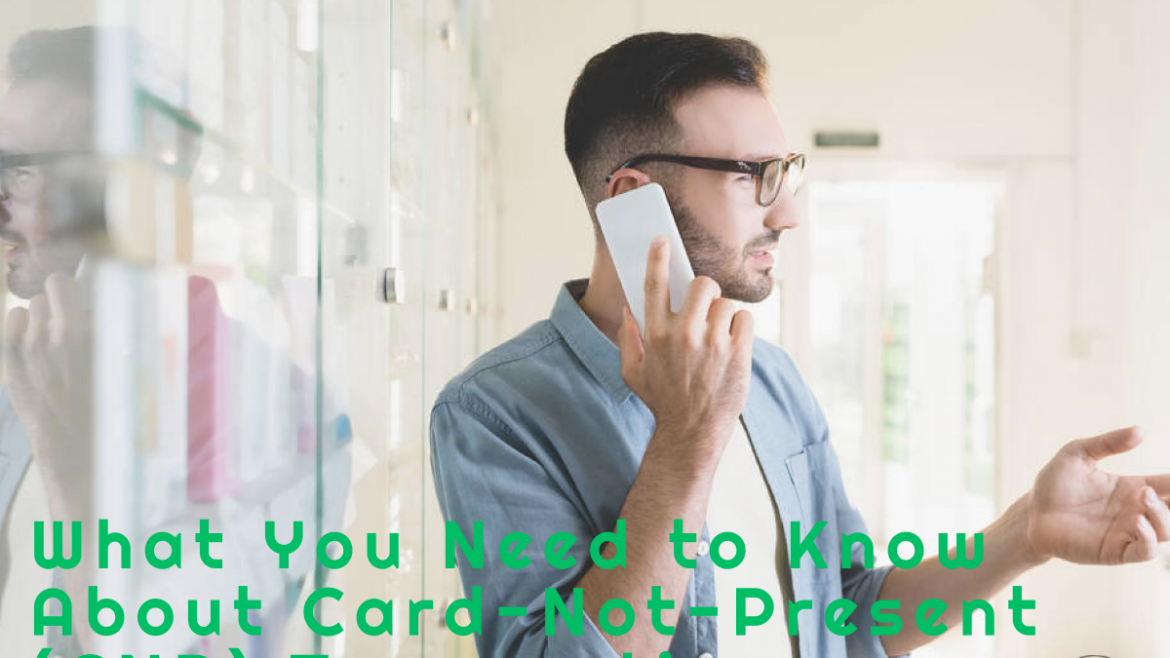Today’s global economy revolves in large part around card payments. In particular, card-not-present (CNP) transactions have seen a growth rate of about 20 percent in 2019 and 2020. Over this period, they outperformed the card-present payments by over 10 times. Here is what CNP transactions are and why your business may need them.
What Are CNP Transactions and Why They Matter
A CNP transaction is any transaction that doesn’t involve swiping the magnetic stripe, inserting the EMV chip, or tapping a mobile wallet against a physical terminal. CNP transactions include phone orders, online invoices, automatic billing, eCommerce carts, and more.
Contrary to popular belief, transactions involving cards can also qualify as card-not-present transactions. For instance, manually typing the card’s information into the terminal is considered a CNP transaction because the card never came in contact with the terminal.
These days, most businesses offer some form of CNP transactions. If you choose not to process CNP transactions and restrict yourself to in-store sales, you’re shutting off a potentially lucrative revenue source. You could provide a work-around by letting your customers order online and pay in the store, but this will make their shopping experience less enjoyable.
CNP Transactions and Fraud Risks
The main issue with CNP transactions is the increased risk of fraud. Many phone, online, and mail order transactions lack security safeguards common to card-present sales. Fraudsters will often take advantage of this fact, which is why almost half of all credit card fraud instances in the U.S. involve CNP transactions.
The best way to protect yourself from CNP fraud is to adhere to the PCI DSS standards. Fortunately, doing so is relatively easy. All payment getaways, payment processors, and equipment suppliers need to undergo a certification process that ensures that your products comply with your industry’s security requirements.
Other than PCI compliance, you can use an address verification system (AVS) for keeping your customers’ billing information. The AVS can verify that the customer’s billing address matches with the card owner’s billing address, reducing the risk of fraud.
Finally, you can use card security checks and 3-D secure codes. The former involves the customer providing their CVV code to complete the transaction, and the latter requires entering a PIN code provided by the issuing bank.
Preventing Chargebacks
Chargebacks are the other common issue with CNP transactions. To protect yourself against chargebacks, you should always provide information on where a transaction was made and how to make exchanges or returns. In other words, you should offer the following:
• Description of the services and products you offer
• Complete business address
• Customer service contact information
• Refund, return, and order cancellation policies
• Delivery policy
You may also want to include a copy of your return policy with your receipts. This serves as a good-faith gesture that paints you in a good light as a merchant and makes it easier for customers to contact you if necessary.
How You Can Get Involved
Now that you know why dog rescue is important, you may be interested in how you can help. Fortunately, there are plenty of things you can do. Here’s a quick list:
• Adopt a dog. If you have room in your home, adopting a dog from a shelter is the best thing you can do for these animals. As mentioned above, there are millions of dogs without homes, and each one you adopt makes more room in the shelter for another dog.
• Donate to trusted organizations. All dog shelters could use money, supplies, and donations. These operations tend to depend on the kindness of others, so consider doing your part in ensuring they continue to fight the good fight.
• Volunteer at a local shelter. Other than money, dog shelters need help with cleaning, intake, exercising dogs, and so on. Some shelters have gift shops you can work in from time to time, while others need help introducing dogs to prospective families.
• Share information about shelters. Your local dog shelter likely has a website that contains information on incoming dogs. Share that information on social media to raise awareness of pets in need of a home.
• Foster dogs until they find a home. Fostering is a key part of any dog rescue program. With shelters filling up so fast, foster homes can expand their capacity and prevent needless euthanization. You can foster a dog for a day, a month, or even longer.
If you would like to learn more about the Downtown Dog Rescue organization or volunteer opportunities, please get in touch with our office and we can connect you with one of their team members.
Downtown Dog Rescue – https://downtowndogrescue.org/
Donate to Downtown Dog Rescue – https://downtowndogrescue.org/donate/
Downtown Dog Rescue Contact Information:
Mailing Address:
P.O. Box 90035 Pasadena, CA 91109
Adoptions: 818.407.4145
Pet Support Space: 213.403.0129
Fax: 213.402.5064


